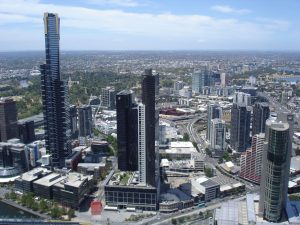What do APRA’s interventions mean for borrowers?

Rarely a day goes by in the Australian media without an article published about the sensitive topic of housing affordability. Such a polarising topic is very inviting for politicians and regulators to try and intervene with appropriate solutions, which can invariably lead to some unintended consequences. A surge in investor lending in the property market over a few years leading into 2014 prompted the Australian Prudential Regulator Authority (APRA) of the Australian financial services industry to take a closer look at the potential risks that may follow. Given the fact that mortgage lending has become a substantially greater part of the major banks’ businesses over time, APRA felt the need to apply some pressure which has since tightened lending criteria in many ways.
So what do APRA’s interventions mean for borrowers in the market?
What measures has APRA undertaken?
Various measures from APRA since late 2014 have been designed to curtail the growth in investor lending in the residential property market.
- Whilst not an absolute hard limit was imposed, APRA cautioned the banks to try and limit the growth rate in the investor lending segment to under 10%.
- They emphasised that more work was needed with stress testing in general.
- Sensitivity analysis on vulnerability to a 2% rise in mortgage rates, and a rate level of 7% was encouraged because current rates were quite low.
- Less specific warnings were given about other riskier lending standards such as high LVRs and interest only loans, which has seen the banks behave much more selectively in approving investor loans. Some are quite conservative and will even apply a discount to some of the expected rental income, and disregard the benefits of negative gearing.
Inaction of the Government and RBA
The burden of monitoring the risks of this area of the economy has increasingly fallen on the shoulders of APRA due to the relative inaction from the Government and RBA. Despite so much talk of potential tax changes that could help slow down investor lending, the recent Federal Budget was heavy on politics but light on potential impact with regards to housing affordability.
Numerous initiatives were announced, yet most economists remain very sceptical that they can address the issue. APRA on the other hand continues to get involved, recently announcing a crackdown on interest only lending by limiting this to 30% of new loans. The RBA however, still has the cash rate at record lows because other areas of the economy remain subdued, and this may well remain the case going forward.
As a result, we have certain rate markets set by the major banks that are a function of market intervention from APRA. This may contrast with the free market’s assessment of underlying risks that certain lending involves, and can lead to market inefficiencies that borrowers and investors should be aware of.
What does this mean for property development?

Property development is another area being affected by this trend. It has been well documented in the media that there are risks associated with an oversupply of inner CBD apartments in Melbourne and Brisbane. The banks wish to demonstrate their prudence and have thus been very cautious when it comes to lending to property developers. Lending now is far more restrictive, with lower LVRs required and a much higher requirement for the level of pre-sales needed for banks to go ahead and lend. There is some debate surrounding whether the major banks have been overly cautious in this sector, given that the recent population stats are showing solid growth and falling vacancy rates this year.
Despite the intervention from APRA, the free markets have a habit of responding to opportunities even when they have to some extent been sought to be repressed. On one hand, we are reading about the major banks tightening lending standards, yet on the other we are hearing about very buoyant times for non-bank lenders. The latter do not offer deposit accounts and are therefore not regulated by APRA. They can be left to set a rate of lending that is not influenced by the pressures of the regulator as described above. Operating free from the shackles of APRA, many non-bank lenders have swiftly filled the void that was created in lending to large property developers. The flexibility of their business models also enables many of them to cater for offshore demand.
Major bank operating model
The model the major banks are operating under has seen pressure from multiple sources. Recent rate hikes have been made from the banks independent of the RBA cycle. In part, pressure from regulators has been sighted for the blame. Aside from that, the Federal Budget has just imposed a bank levy on the large banks that will have a significant effect. If the banks are being supressed by APRA and the government, we should be asking ourselves whether the current rates being offered by the banks to property investors and developers are being appropriately priced? Are they reflective of the free market determining the underlying risk of the loan, or are they perhaps being priced at prohibitive levels due to market inference?
The answer to these questions may be in the response by non-bank lenders in these market segments, and thus far they are seizing the opportunity. In many cases, they may have the desire and capacity to grow their business and loan book. Contrast this with some of the banks who may not want to grow their lending in certain areas that APRA are targeting.
So for those looking to obtain finance in the property sector, consider the question of who really wants your business, the banks or non-bank lenders?
Varna Capital provides developers and commercial property investors with market leading access to a broad range of financing options. We utilise strong capital partner relationships that include bank and non-bank alternatives from Australia and across the globe.
Get in touch with Varna Capital here.
